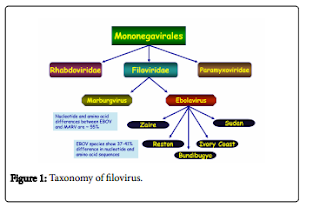Ebola virus disease (formerly called Ebola Hemorrhagic
Fever) is a severe, often fatal, disease in humans and nonhuman primates, which
is caused by the Ebola virus. Between 1976 and 2014 twenty-four epidemics of
Ebola virus disease (EVD) were verified, mostly caused by Zaire Ebola virus
(ZEBOV) in Equatorial Africa. Most outbreaks have been small, but the virus
captured the attention of the world due to death rates that can be as high as
90% as well as the visceral manner in which it kills.
 In March 2014, World Health Organization (WHO) reported a
major Ebola outbreak in Guinea, Liberia and Sierra Leone, western African
nations. The 2014 EVD outbreak in West Africa caused by ZEBOV is the longest,largest, deadliest, and the most complex in history. As of 11 February 2015,
there were 22,859 EVD cases and a total of 9,162 deaths. Compared to the
cumulative sum of past episodes in 36 years (1976-2012), 2,232 infected people
and 1,503 deaths there are now over ten times the total number infection cases
and over six times the total number of fatalities. The Ebola virus disease
outbreak in West Africa affected impoverished post-conflict countries with weak
health systems and no experience with Ebola.
In March 2014, World Health Organization (WHO) reported a
major Ebola outbreak in Guinea, Liberia and Sierra Leone, western African
nations. The 2014 EVD outbreak in West Africa caused by ZEBOV is the longest,largest, deadliest, and the most complex in history. As of 11 February 2015,
there were 22,859 EVD cases and a total of 9,162 deaths. Compared to the
cumulative sum of past episodes in 36 years (1976-2012), 2,232 infected people
and 1,503 deaths there are now over ten times the total number infection cases
and over six times the total number of fatalities. The Ebola virus disease
outbreak in West Africa affected impoverished post-conflict countries with weak
health systems and no experience with Ebola.
Ebola is a public health nightmare because it
can be contacted relatively easily (especially in a hospital setting where
proper precautions are not taken) and is almost always fatal. EVD can be
transmitted between humans through direct contact with bodily fluids (e.g.,
blood, sweat) from an infected person or contaminated objects. Whereas aerosol
infection has not been reported clinically, despite it has been demonstrated in
experimental infection in monkeys. Read more...........
No comments:
Post a Comment